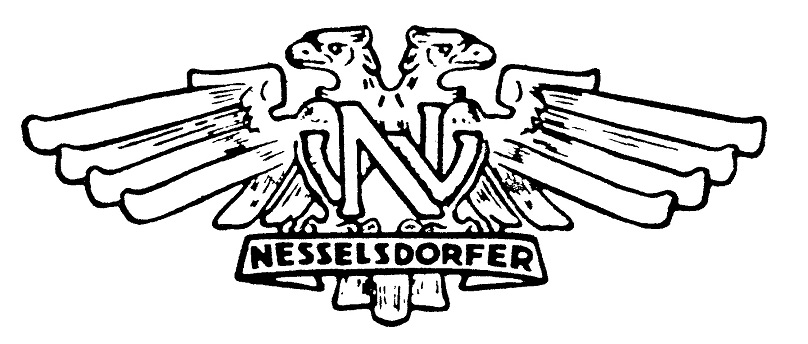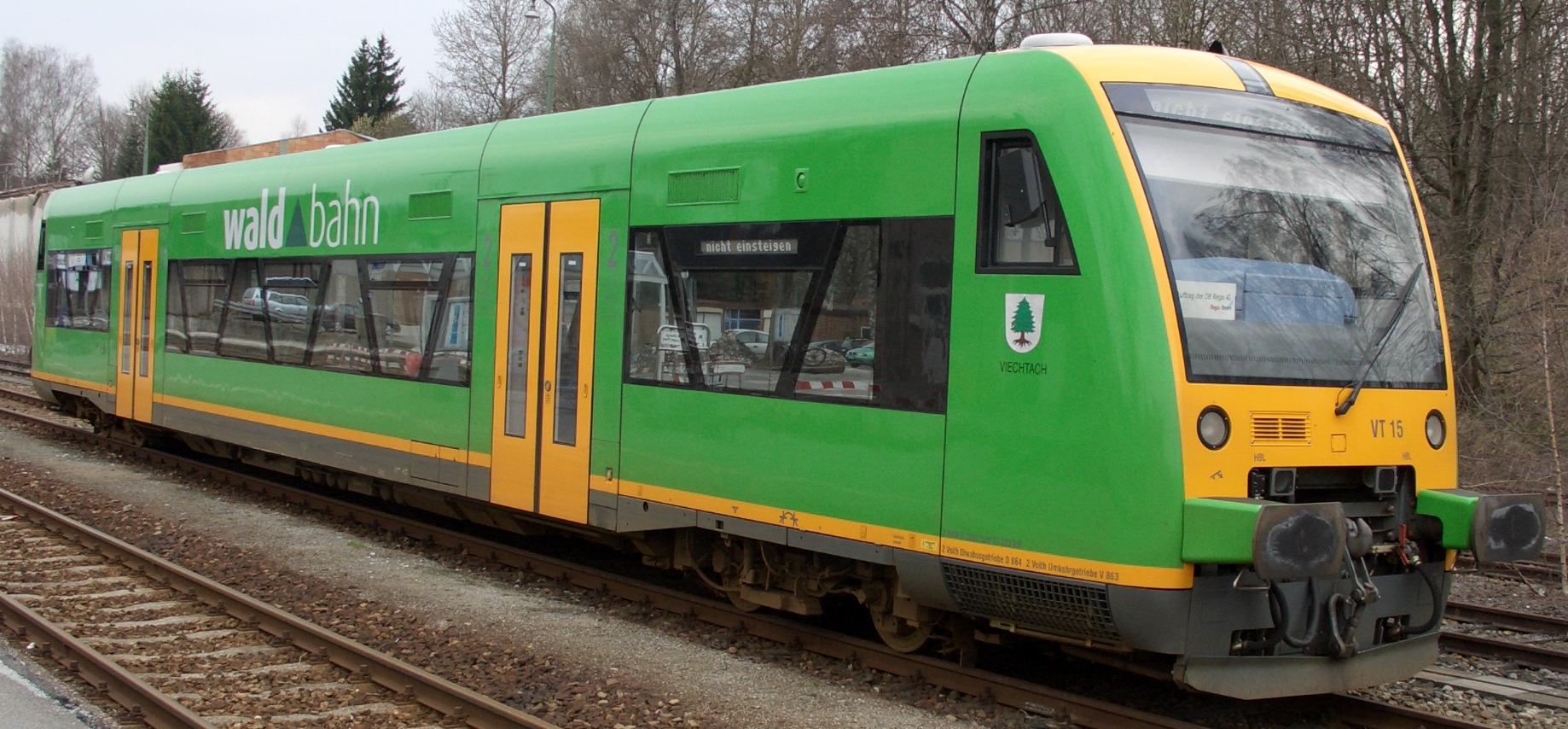|
áSD Class M 290.0
Railcar class M 290.0 (manufactured as Tatra 68), named after an express train which it served as '' SlovenskûÀ strela'' was manufactured by Tatra Kopéivnice in 1936 for Czechoslovak State Railways. Only two units were manufactured and were used on newly introduced express train SlovenskûÀ strela starting in 1936. They covered the distance in 4 hours and 28 minutes with a maximum speed of 130 km/h. Both were taken out of service when World War II started in 1939. Afterwards, they were only occasionally deployed on local routes. The M 290.001 was taken out of service in 1953, the M290.002 in 1960. The M 290.002 is now on display in the company museum of Tatra in Kopéivnice. The M 290.001 did not survive. As of August 2018, the car no. 290,002 is being restored at a cost of 35 million crowns (CZK). Upon completion it will once again be capable of full operation. Gallery Image:M 290.0 front.JPG, Front view of M 290.002 Image:M 290 001 a 02.jpg, Railcars M 290.001 and M 2 ... [...More Info...] [...Related Items...] OR: [Wikipedia] [Google] [Baidu] |
Tatra (company)
Tatra is a Czech vehicle manufacturer from Kopéivnice. It is owned by the TATRA TRUCKS a.s. company, and it is the third oldest company in the world producing motor vehicles with an unbroken history. The company was founded in 1850 as ''Ignatz Schustala & Cie''. In 1890 the company became a joint-stock company and was renamed the ''Nesselsdorfer Wagenbau-Fabriksgesellschaft''. In 1897, the ''Nesselsdorfer Wagenbau-Fabriksgesellschaft'' produced the PrûÊsident, which was the first factory-produced automobile with a petrol engine to be made in Central and Eastern Europe. The First Truck was made a year later, in 1898. In 1918, the company was renamed ''KopéivnickûÀ vozovka a.s.'', and in 1919 it changed from the Nesselsdorfer marque to the ''Tatra'' badge, named after the nearby Tatra Mountains on the Czechoslovak- Polish border (now on the Polish- Slovak border). In the interwar period, Tatra came to international prominence with its line of affordable cars based on ba ... [...More Info...] [...Related Items...] OR: [Wikipedia] [Google] [Baidu] |
áSD
Czechoslovak State Railways (''áeskoslovenskûˋ stûÀtnûÙ drûÀhy'' in Czech language, Czech or ''áeskoslovenskûˋ éÀtûÀtne drûÀhy'' in Slovak language, Slovak, often abbreviated to áSD) was the state-owned railway company of Czechoslovakia. The company was founded in 1918 after the end of the World War I, First World War and dissolution of Austria-Hungary. It took over the rolling stock and infrastructure of the Imperial Royal Austrian State Railways. In 1930 Czechoslovakia had of railways: the fifth-largest network in Europe. Of these 81% were state (áSD)-owned, and the trend was to nationalize the remaining private railways. Most of the infrastructure was concentrated in the industrial regions of the Czech lands. 87% of the railroads were Single track (rail), single-track. 135,000 people were employed on the railways: about 1% of the population. When Nazi Germany dissolved Czechoslovakia in 1939, the Protectorate of Bohemia and Moravia formed the "Bohemian-Moravian Railw ... [...More Info...] [...Related Items...] OR: [Wikipedia] [Google] [Baidu] |
Railcar
A railcar (not to be confused with the generic term railroad car or railway car) is a self-propelled railway vehicle designed to transport passengers. The term "railcar" is usually used in reference to a train consisting of a single coach (or carriage, car, unit), with a driver's cab at one or both ends. In its simplest form, a "railcar" may also be little more than a motorized railway handcar, draisine or railbus. Some railway companies, such as the Great Western, termed such vehicles " railmotors" (or "rail motors"). Self-powered railcars were once common in North America; and termed Doodlebugs. Self-propelled passenger vehicles also capable of hauling a train are, in technical rail usage, more usually called " rail motor coaches" or "motor cars" (not to be confused with the motor cars, otherwise known as automobiles, that operate on roads). Alternative use In Australia, the term is sometimes also used as an alternative name for the small types of multiple un ... [...More Info...] [...Related Items...] OR: [Wikipedia] [Google] [Baidu] |
SlovenskûÀ Strela
Slovak may refer to: * Something from, related to, or belonging to Slovakia (''SlovenskûÀ republika'') * Slovaks, a Western Slavic ethnic group * Slovak language, an Indo-European language that belongs to the West Slavic languages * Slovak, Arkansas, United States See also * SlovûÀk, a surname * SlovûÀk, the official newspaper of the Slovak People's Party Andrej Hlinka, Hlinka's Slovak People's Party (), also known as the Slovak People's Party (, Sá§S) or the Hlinka Party, was a far-right Clerical fascism, clerico-fascist political party with a strong Catholic fundamentalism, Catholic fundamental ... * {{disambiguation, geo Language and nationality disambiguation pages ... [...More Info...] [...Related Items...] OR: [Wikipedia] [Google] [Baidu] |
Czechoslovak State Railways
Czechoslovak State Railways (''áeskoslovenskûˋ stûÀtnûÙ drûÀhy'' in Czech or ''áeskoslovenskûˋ éÀtûÀtne drûÀhy'' in Slovak, often abbreviated to áSD) was the state-owned railway company of Czechoslovakia. The company was founded in 1918 after the end of the First World War and dissolution of Austria-Hungary. It took over the rolling stock and infrastructure of the Imperial Royal Austrian State Railways. In 1930 Czechoslovakia had of railways: the fifth-largest network in Europe. Of these 81% were state (áSD)-owned, and the trend was to nationalize the remaining private railways. Most of the infrastructure was concentrated in the industrial regions of the Czech lands. 87% of the railroads were single-track. 135,000 people were employed on the railways: about 1% of the population. When Nazi Germany dissolved Czechoslovakia in 1939, the Protectorate of Bohemia and Moravia formed the "Bohemian-Moravian Railway" company (in Czech ''áeskomoravskûˋ drûÀhy-áMD'', in Germa ... [...More Info...] [...Related Items...] OR: [Wikipedia] [Google] [Baidu] |
Czech Crown
The koruna, or crown (sign: Ká; code: CZK, ), has been the currency of the Czech Republic since 1993. The koruna is one of the European Union's eight currencies, and the Czech Republic is legally bound to adopt the euro in the future. The official name in Czech is (plural , though the zero-suffixed genitive plural form is used on banknotes and coins of value 5 Ká or higher). The ISO 4217 code is CZK and the local acronym is Ká, which is placed after the numeric value (e.g., "50 Ká") or sometimes before it (as is seen on the 10-koruna coin). One crown is made up of 100 '' hellers'' (abbreviated as "h", official name in Czech: singular: , nominative plural: , genitive plural: ã used with numbers higher or equal to 5 ã e.g. ), but hellers have now been withdrawn from circulation, and the smallest unit of physical currency is 1 Ká. History In 1892, the Austro-Hungarian krone replaced the gulden at the rate of two kronen to one gulden (which is also t ... [...More Info...] [...Related Items...] OR: [Wikipedia] [Google] [Baidu] |
Péerov
Péerov (; ) is a city in the Olomouc Region of the Czech Republic. It has about 41,000 inhabitants. It lies on the Beáva River. In the past it was a major crossroad in the heart of Moravia in the Czech Republic. The historic city centre is well preserved and is protected as an urban monument zone. Administrative division Péerov consists of 13 municipal parts (in brackets population according to the 2021 census): *Péerov I-Másto (31,582) *Péerov II-PéedmostûÙ (3,992) *Péerov III-LováéÀice (481) *Péerov IV-Kozlovice (589) *Péerov V-Dluhonice (349) *Péerov VI-ûjezdec (868) *Péerov VII-áekyná (649) *Péerov VIII-Henálov (513) *Péerov IX-Lû§sky (187) *Péerov X-Popovice (242) *Péerov XI-Vinary (711) *Péerov XII-é§eravice (562) *Péerov XIII-Penáice (294) Etymology The name Péerov is of Old Slavic origin. It meant 'ditch', 'pool', 'swamp', or 'stagnant water'. Geography Péerov is located about southeast of Olomouc. The eastern part of the municipal terr ... [...More Info...] [...Related Items...] OR: [Wikipedia] [Google] [Baidu] |
é§leby
é§leby is a municipality and village in KutnûÀ Hora District in the Central Bohemian Region of the Czech Republic. It has about 1,400 inhabitants. It is known for the é§leby Castle, which is a national cultural monument. Administrative division é§leby consists of four municipal parts (in brackets population according to the 2021 census): *é§leby (1,153) *Kamennûˋ Mosty (68) *Markovice (51) *Zehuby (69) Etymology The name is derived from the Czech word ''éƒlab'', i.e. 'trough'. Geography é§leby is located about southeast of KutnûÀ Hora and southwest of Pardubice. It lies in a flat agricultural landscape of the Central Elbe Table. The highest point is at above sea level. The Doubrava River flows through the municipality. History The first written mention of é§leby is from 1278. In the Middle Ages, it used to be a market town. It was promoted to a market town in 1356, when it was owned by King Charles IV. Demographics Transport é§leby is located on the railway line of loca ... [...More Info...] [...Related Items...] OR: [Wikipedia] [Google] [Baidu] |
Excursion Train
An excursion train is a chartered train run for a special event or purpose. Examples are trains to major sporting event, trains run for railfans or tourists, and special trains operated by the railway company for employees and prominent customers. United Kingdom A number of excursion trains are run in the United Kingdom and in some cases there are regular steam worked passenger services over some routes, one such train being '' The Jacobite'' which runs Monday to Friday from Fort William to Mallaig from April to October. A second afternoon train also runs from May to mid September but on weekdays only, weekend services running from June to October. A number of Christmas Jacobite's have even started running on select days in December. There are also a number of routes across the UK which are famed for running excursion trains, examples include: Settle & Carlisle line, Cumbrian Coast line, Shakespeare line, Scarborough line, West Coast Main Line and East Coast Main Line. ... [...More Info...] [...Related Items...] OR: [Wikipedia] [Google] [Baidu] |
Rolling Stock Of The Czech Republic
Rolling is a type of motion that combines rotation (commonly, of an axially symmetric object) and translation of that object with respect to a surface (either one or the other moves), such that, if ideal conditions exist, the two are in contact with each other without sliding. Rolling where there is no sliding is referred to as ''pure rolling''. By definition, there is no sliding when there is a frame of reference in which all points of contact on the rolling object have the same velocity as their counterparts on the surface on which the object rolls; in particular, for a frame of reference in which the rolling plane is at rest (see animation), the instantaneous velocity of all the points of contact (for instance, a generating line segment of a cylinder) of the rolling object is zero. In practice, due to small deformations near the contact area, some sliding and energy dissipation occurs. Nevertheless, the resulting rolling resistance is much lower than sliding friction, and t ... [...More Info...] [...Related Items...] OR: [Wikipedia] [Google] [Baidu] |
Railway Locomotives Introduced In 1936
Rail transport (also known as train transport) is a means of transport using wheeled vehicles running in tracks, which usually consist of two parallel steel rails. Rail transport is one of the two primary means of land transport, next to road transport. It is used for about 8% of passenger and freight transport globally, thanks to its energy efficiency and potentially high speed.Rolling stock on rails generally encounters lower frictional resistance than rubber-tyred road vehicles, allowing rail cars to be coupled into longer trains. Power is usually provided by diesel or electric locomotives. While railway transport is capital-intensive and less flexible than road transport, it can carry heavy loads of passengers and cargo with greater energy efficiency and safety. Precursors of railways driven by human or animal power have existed since antiquity, but modern rail transport began with the invention of the steam locomotive in the United Kingdom at the beginning of the 19 ... [...More Info...] [...Related Items...] OR: [Wikipedia] [Google] [Baidu] |




